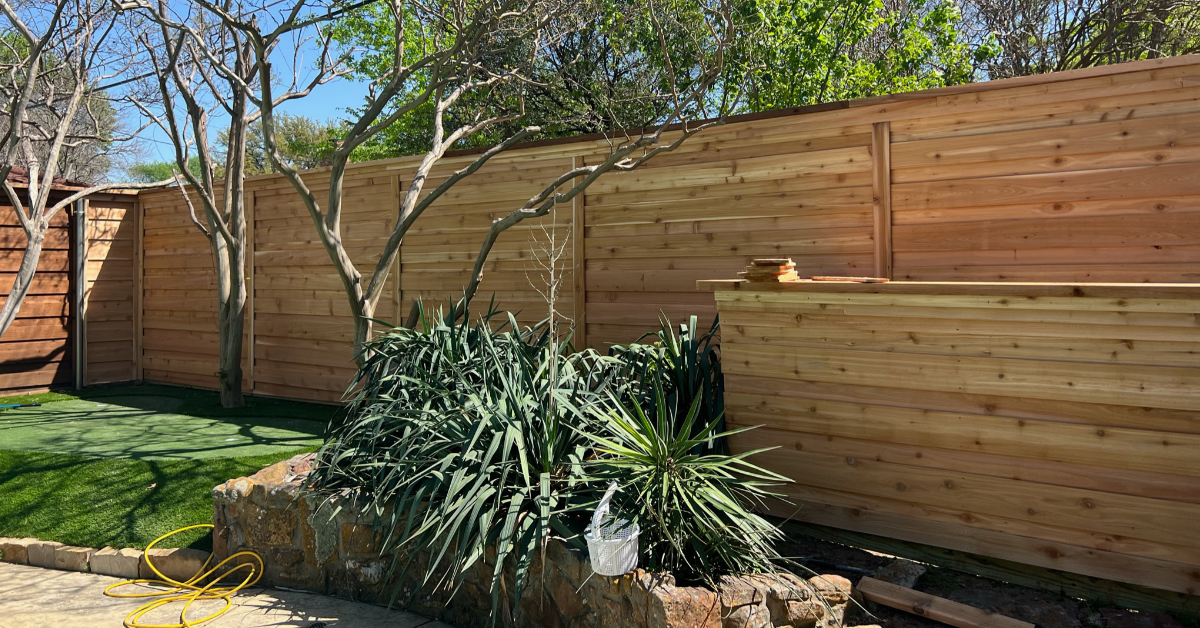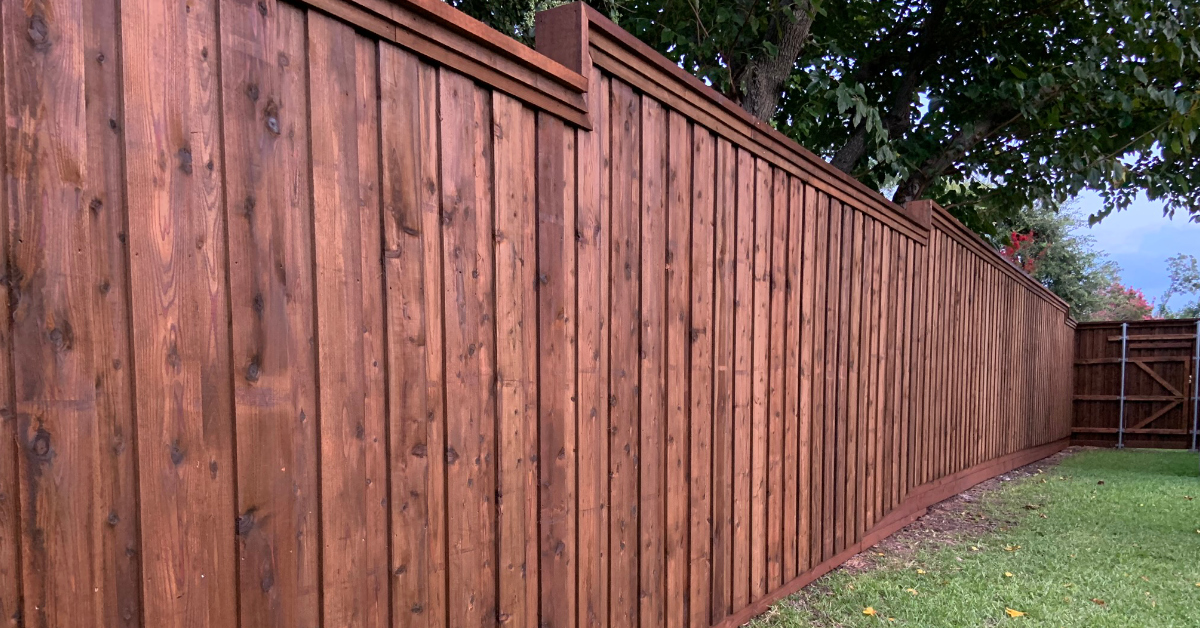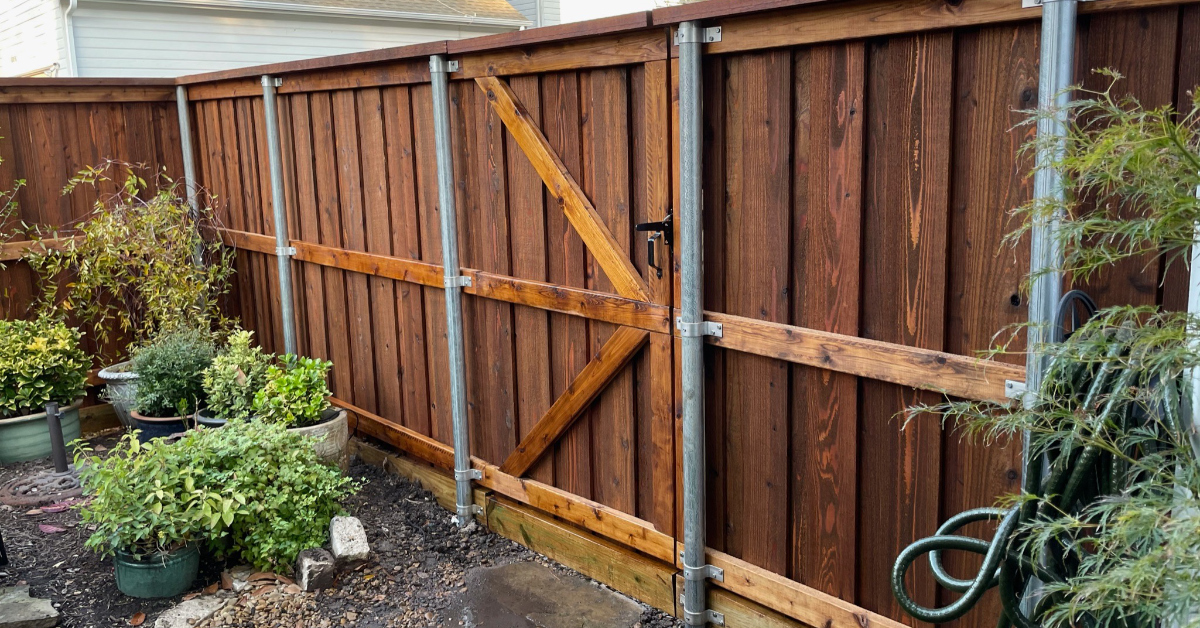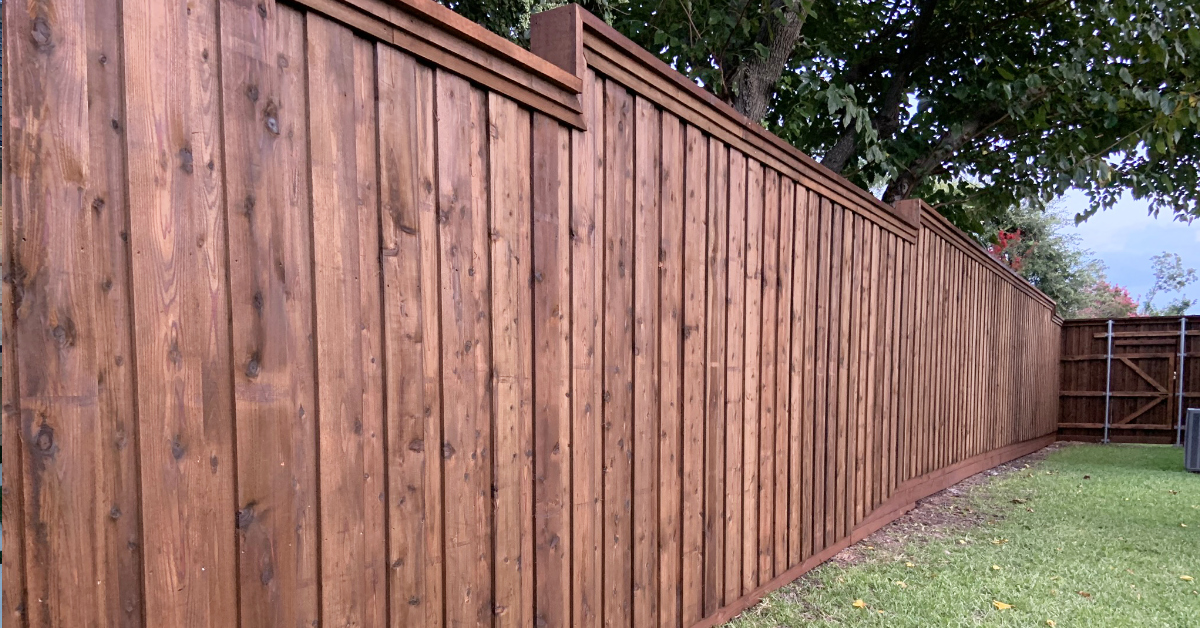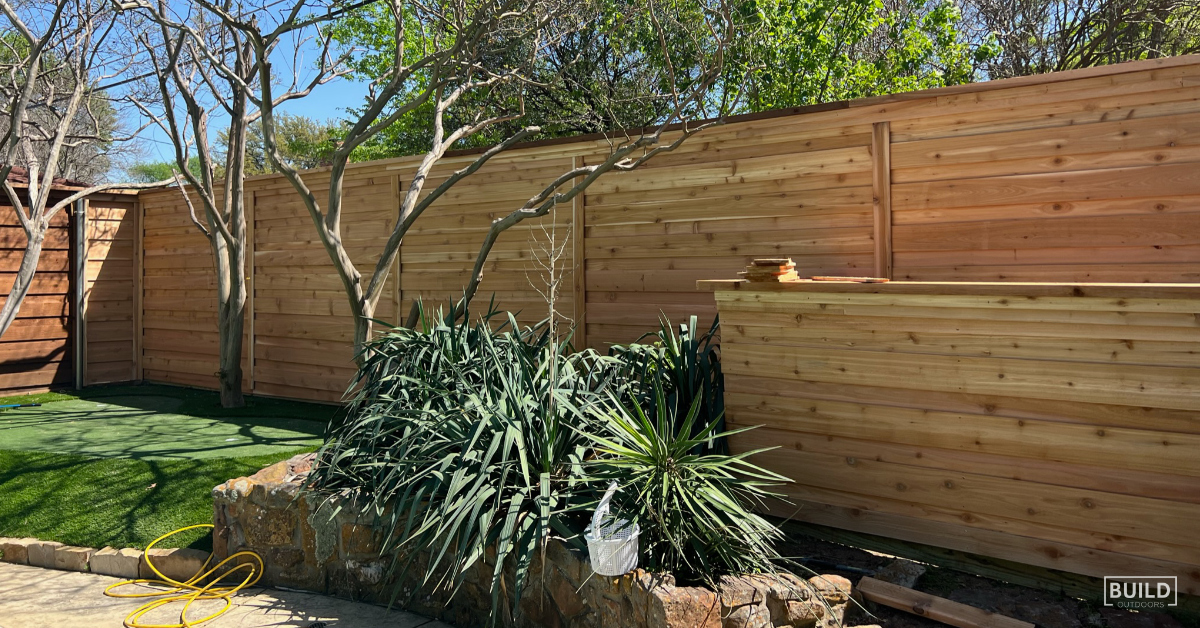There are many different types of wood that exist in the world and they have unique natural properties that make them useful for many different things. When it comes to fences, there are several popular options that range in longevity, insect and rot resistance, and pricing. But what is the best type of wood for a fence?
Fences in the DFW area face unique challenges due to extreme weather. The climate is categorized as humid subtropical with hot summers. We all certainly feel the humidity every time summer rolls around! Imagine the effect it has on fences. The extreme changes in temperature and moisture make the choice of wood critical to a fence’s longevity.
In our experience Western red cedar, pressure-treated pine, and redwood last the longest. Below we highlight the different natural properties of these types of wood and why they make excellent choices for fences in the DFW area.
Western Red Cedar
This is one of the best and most common wood when it comes to fencing options. It is known for standing up well to extreme temperatures & moisture changes. When the weather swings from hot to cold, the thermal expansion strains the fibers of the wood. Weather change has no effect on the tight fibers red cedar which is why it is one of the most commonly used fencing materials.
A similar problem occurs when wood is exposed to moisture and then dried, this constant expansion and contraction will sap the strength from most of the grains. Red cedar contains natural oils that act as preservatives, helping it last longer.
Red cedar is beautiful; it is more expensive but is extremely durable and provides good value in the long term. It is our top choice for all the things mentioned above, but it also smells wonderful!
Pressure Treated Pine
One of the most common wood for fence construction is pressure-treated pine. It is a popular choice because it is widely available in many areas, including the DFW area, and is easy to work with.
Pine isn’t naturally resistant to decay and insects like cedar, but pressure treatment greatly extends its lifetime. If you have concerns regarding the chemical treatment the wood undergoes and how it might affect your family or pets, cedar would be a better option.
The color of pine is rather yellow in color but takes stain very well; you can customize the look however you wish. Should you stain your fence? It helps prevent moisture absorption, reducing the chance of cracking and warping. But it will require reapplication of stain or sealant more often to ensure longevity.
Of the wood options available, pressure treated pine will be the most cost effective option for your fence.
Redwood
Some types of redwood are super tough against decay fungi, especially when you go for high-quality redwood heartwood. That heartwood is like rot-repellent magic! Plus, redwood has a fine texture, straight grain, and non-sticky structure, making it even more moisture-resistant for your fence.
Some redwood species are like superheroes against termites, just like red cedar. Those little critters are not big fans of redwood heartwood, and they chomp on it way less compared to spruce and fir. This is a win against the termite army.
Redwood pricing is on par with Western red cedar, but with a gorgeous naturally reddish color. But, redwood is not as common in Texas, and it’s a bit pricier than red cedar.
Other Wood Used for Fencing in Texas
Fir
One of the more affordable fence woods, fir is not as insect resistant and rot-resistant as cedar or redwood. This wood would require more regular staining and sealing in order to increase its longevity.
Spruce
Another low-cost option is spruce. It is a softwood that is more prone to decay and rot when exposed to moisture. Spruce does not contain the natural oil that cedar and redwood contain, making it more susceptible to insects. This wood would require much more ongoing maintenance in order to extend its lifespan.
Is fir or spruce the best type of wood for a fence in DFW? We don’t recommend it for this climate, but either can work well in more dry, arid areas.
Let’s Build Your Fence
So what is the best wood to use for a fence in North Texas? The answer is western red cedar, pressure treated pine, or redwood for the best longevity and performance.
We hope that our years of experience installing fences with the best wood for the North Dallas area has helped you make a decision on the best wood for your fence. There are a few other options outside of wood, such as vinyl or wrought iron. But nothing beats the classic appeal of solid wood.
The most crucial thing, however, is to base your decision on the climatic conditions of your area. This way, you can be sure that your fence won’t rot away in just a few months.
Need more help deciding what the best type of wood would be best for your fence? Give us a call at 469.648.7726 and we would be happy to answer any questions you might have. Or Get a Free Quote today!

